by Barbara Arnold – July 23, 2020
In the traditional territory of the Tla-o-qui-aht First Nation, at the heart of the Clayoquot Sound UNESCO Biosphere Region lays the small coastal village called Tofino.
This is my favorite place to visit in British Columbia. Tofino is a small district on Vancouver Island, off Canada’s west coast and is characterised by wild natural scenery including lakes, inlets, ancient rainforest and sandy beaches.
I have made many trips to these exquisite beaches and ancient coastal temperate rainforests. Sometimes as a stop over to fly to islands such as Nootka or Flores Island other times to stay in Tofino to enjoy the beautiful wild rugged scenery. I love strolling over the beaches looking for interesting pieces of driftwood, shells and rocks. The sound of the waves and the birds have an intoxicating sense of tranquility that you only seem to find here.One of the coast’s most beautiful, relaxing beaches is Florencia Bay. Known locally as Wreck Bay, Florencia Beach is named after the ship that was wrecked here in 1861. The trail begins with a scenic view over Florencia Bay then leads down a set of tangled wooden steps to glorious white sand. This windless beach with the beautiful rain forest stretching out in both directions is accompanied by a beautifully distinct horizon and massive waves which make it such a special beach that both my dog and I absolutely love.
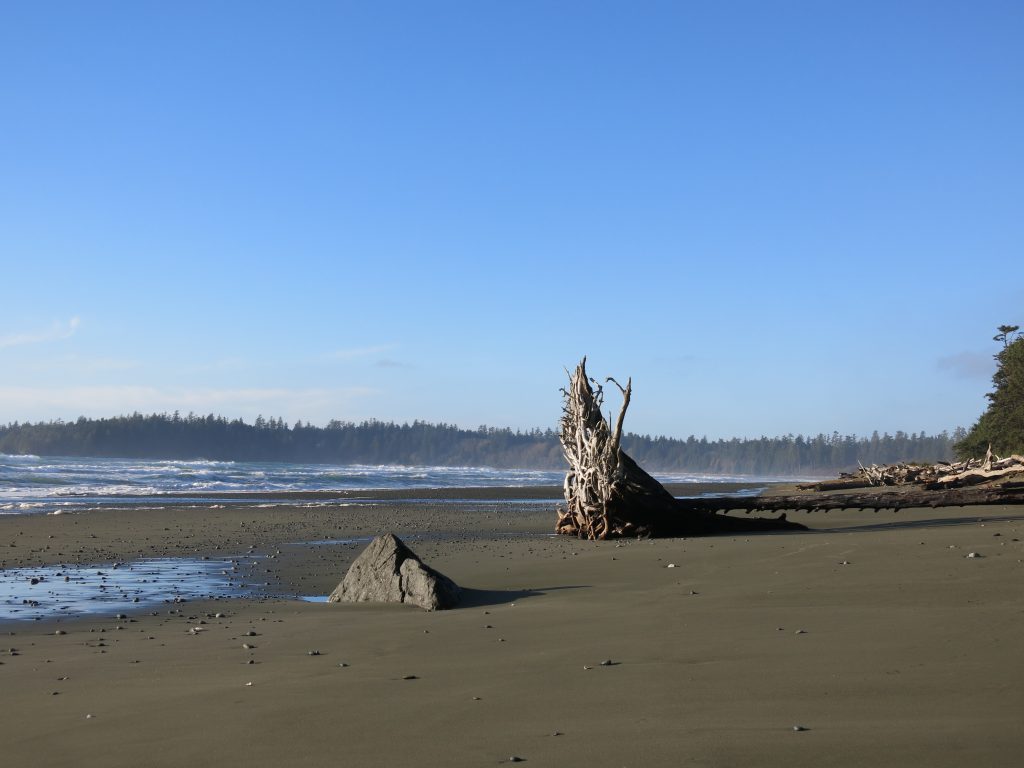
It was this beach that inspired me to paint my painting Tofino. This painting is part of my Latitude & Longitude series. I incorporated some pieces of driftwood and some string that I found while beachcombing these shores into this painting. If you look closely in this painting you will see the resemblance of a whale. Each spring 25,000 grey whales pass through the sound!
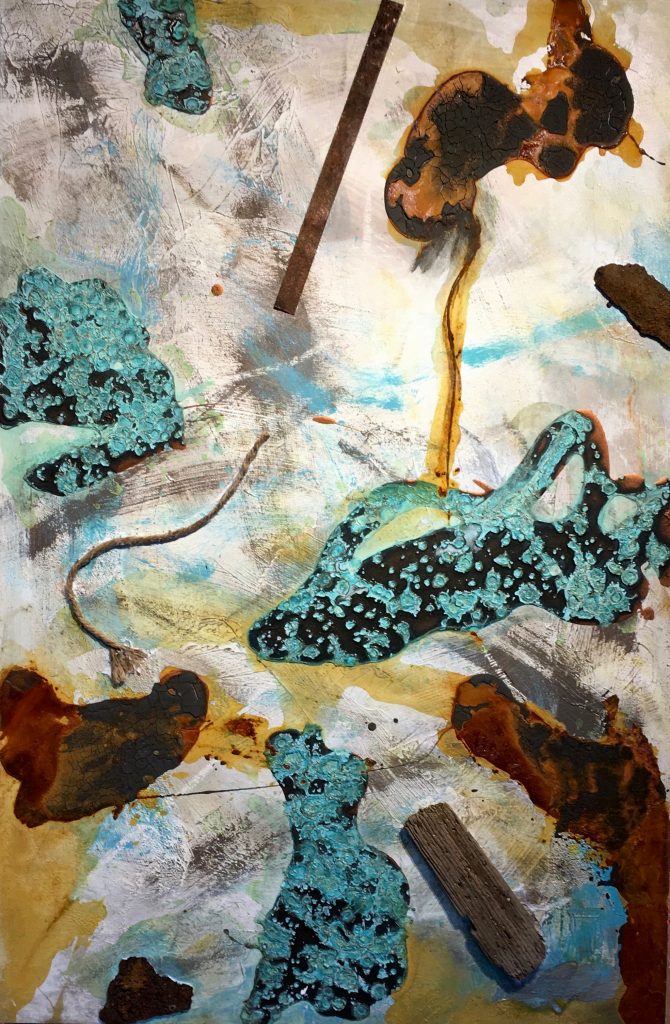
The community in Tofino is diverse, but united in their determination to protect the awe-inspiring natural and cultural environments that surround it. After all, everything in Tofino is connected: from the kelp in the Pacific Ocean, to the black bears of the rainforest, to the people who call this place home. There’s a special energy in Tofino, something you can’t quite shake once you’ve experienced it, an image that will continue to reappear in your dreams.
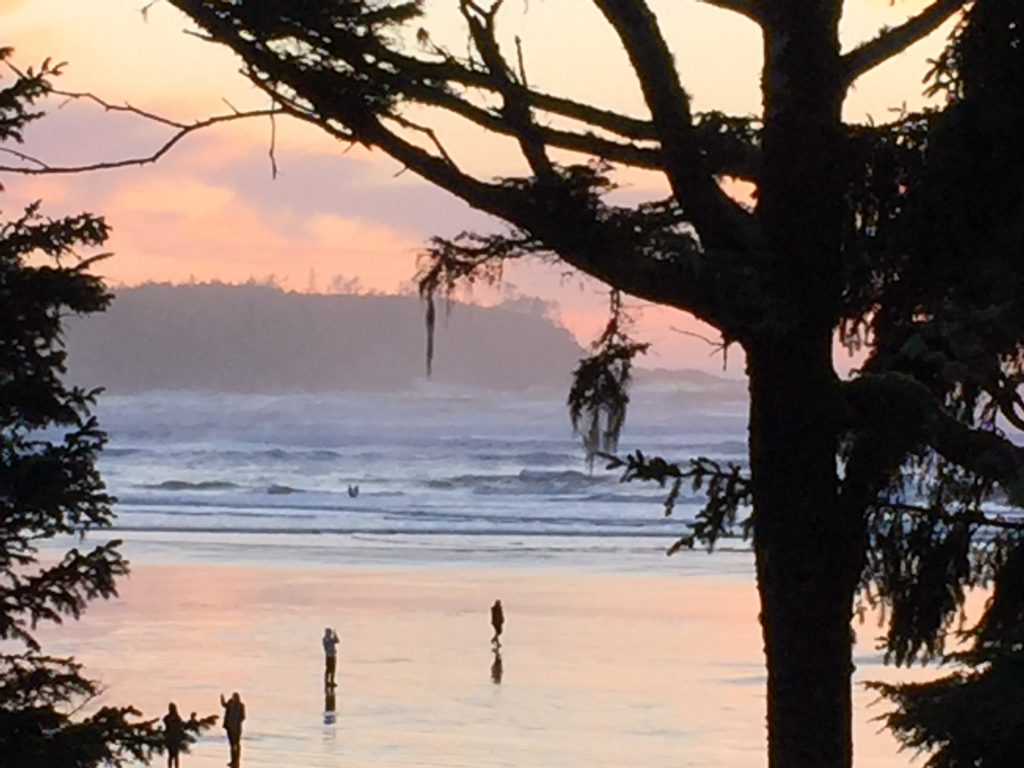
Initially, there was no village or settlement named Tofino. Nuu-chah-nulth First Nations were the first inhabitants of Clayoquot Sound. The Tla-o-qui-at Village of Opitsaht was located across the water from Tofino on Meares Island. They are known to have inhabited this area for thousands of years. The word “Clayoquot” comes from their native word “Tla-o-qui-at”, meaning different people or people of Clayoqua. Tofino and specific places along that inlet would have had numerous Tla-o-qui-at names. The Nuu-chah-nulth were fishers and known for fishing salmon, cod, halibut and shellfish. They also hunted sea lions, seals and whales. It is thought that prior to Europeans arriving on their shores their population reached 100,000. In 1995, the population of Nuu-chah-nulth First Nations inhabiting Tla-o-qui-at Reserves was 618.It was in 1792, that Clayoquot Sound’s southernmost inlet was named “Tofiño Inlet” by Spanish navy commanders Dionisio Alcalá Galiano and Cayetano Valdés. It was named in honor of Captain Vincent Tofiño. Just one year prior, this inlet was named “Gervete” by Galiano and Cayetano Valdés Spanish compatriot, Juan Pantoja. He was the first pilot on the San Carlos. The names of these three Spanish navy men continue to be recognized and used today in British Colombia. Galiano Island, Valdés Island in the Strait of Georgia, and Pantoja Island in the “Spanish Pilot Group” of islands. These are located southwest of Bligh Island in Nootka Sound. The reason why Europeans had such a great interest in this area was because of furs from, primarily, the sea otters. There was a plentiful supply. There was great demand from Asian countries.The first non-native settlement was established in 1855 at Clayoquot on Clayoquot (or Stubbs) Island. To create a greater distinction between the township of Clayoquot and Clayoquot Island the name “Tofino” began to be used.
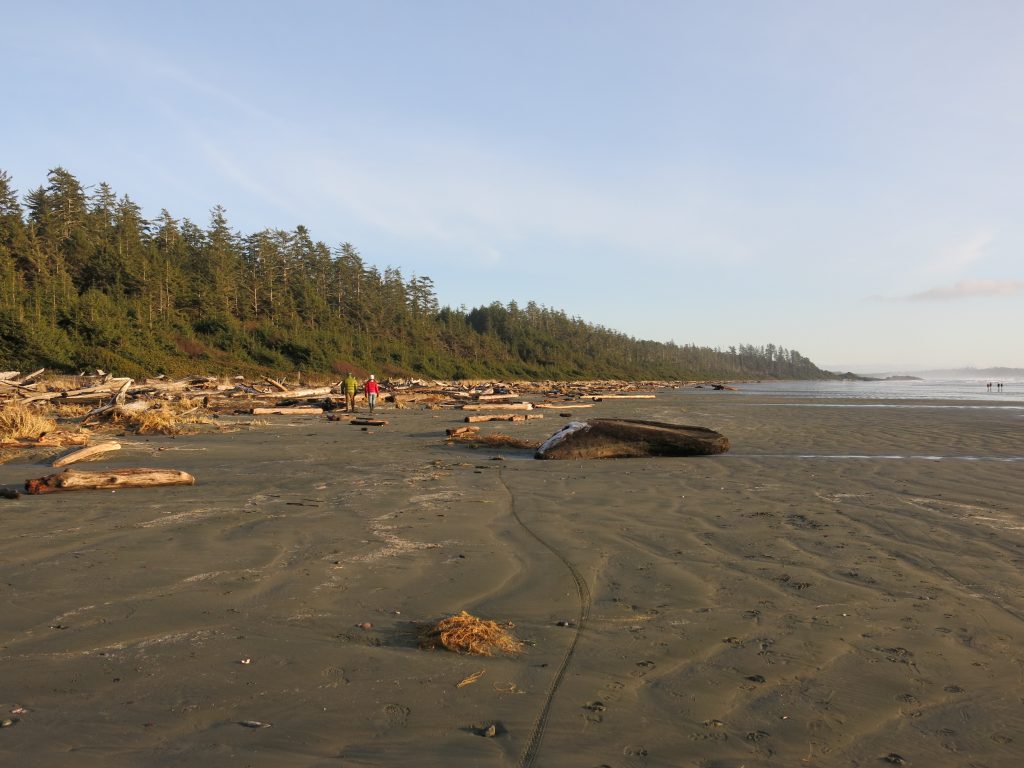
By the late 1890’s, homesteads began appearing on the Esowista Peninsula, across the water from Clayoquot. Settlers were mostly Norwegian, Scots and English. The first doctor arrived in 1905. The first post office was founded in Tofino, February 1st, 1909 and its’ first church was built in 1913. The Church of England funded the project instructing that the church be built on the most beautiful spot on Vancouver Island. The church still stands today. Tofino was originally identified in the British Columbia Gazetteer as a “Post Office and Steamer Landing”, but on February 5, 1932 it was incorporated as a village municipality.
Tofino continued to expand with the first logging road opening in 1959. This was the most significant transportation link which allowed new markets to flourish for fish and logging. This road stretches through the mountains between Port Alberni and the coast. Next, the Pacific Rim National Park was established in 1971 thanks to Dr. Howard McDiarmid. The national park opened the door for international tourism to Tofino. The most recent major international recognition was by the United Nations (UN) as a UNESCO Biosphere Reserve in January 2000. The UN recognized this area as one of unparalleled natural and cultural riches that has remained largely unchanged.
Following World War II, the Dominion Government decided it would be wise to build an air base on the West Coast. Tofino was chosen as the perfect location. It now serves as Tofino and Ucluelet’s airport.
It is at this airport where I slept on the tarmac one evening as we could not leave that day due to the fog and rain. I discovered that sleeping under the wing of an aircraft in a sleeping bag is surprisingly dry. This area along the Pacific Ocean is truly the crown Jewel of the Pacific Northwest.
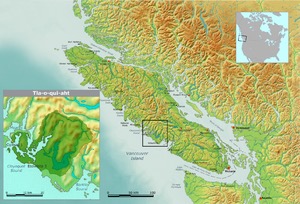


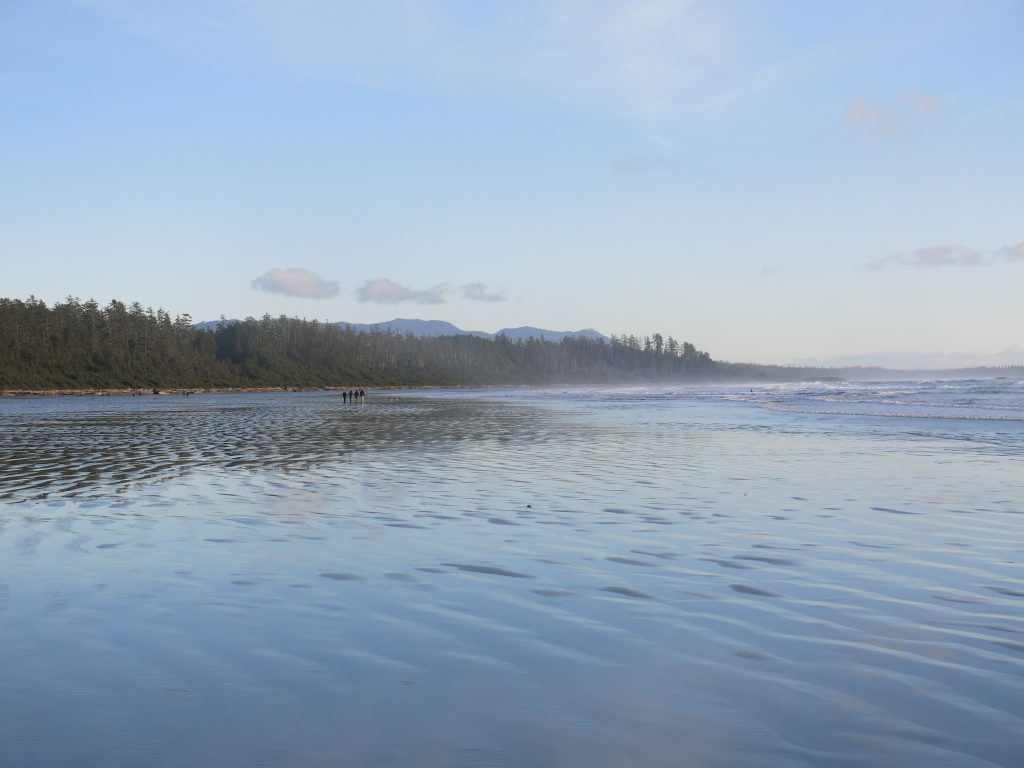
No Comments